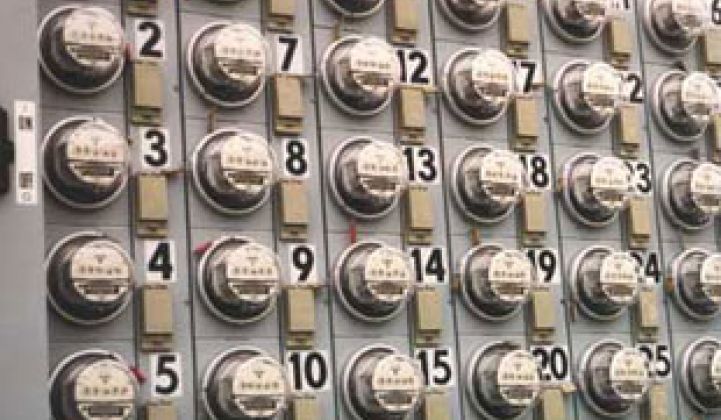The U.S. Department of Energy’s Buildings Technologies Program finalized its latest challenge on Wednesday: an initiative to develop a $100 wireless submeter.
The submeters will have to be able to track energy consumption but do not have to be revenue-grade power meters.
“It’s a bit of a Field of Dreams thing,” Elena Alschuler, a specialist in building energy performance at the DOE, said at the Advanced Energy Conference in New York City. “If you build it, they will buy it.”
The promise of submeters is that they can help building owners and tenants better understand energy use and help solve the split incentive issue, where the party who pays for energy upgrades isn’t the same as the one who pays the energy bill.
Alschuler said that many submeters can cost upwards of $1,000, which is far too much just for buildings to be able to provide energy information to tenants. The result is that the penetration of submeters is fairly low -- they are present in only about 10 percent to 15 percent of the commercial and multi-family residential building space. Some submeter makers, like GE, have already been working on bringing down the price, but the DOE is looking for even bigger price drops. Pike Research predicts the market for submetering will double between 2012 and 2020 to reach $1.58 billion globally.
Although the meters do not need to meet the requirements to be used for billing, there are other details within the specification, which was finalized on Thursday.
Some of the key requirements are:
- The submeter has to collect watt-hour energy for a three-phase circuit.
- Data measurement, transmission and collection must be open protocol.
- The communications must be wireless, although there was no specification for the type of wireless. It cannot leverage the building’s other communication systems.
- The submeter must be self-contained.
- The power source has to come from within the power panel it connects to or the system being monitored.
- The $100 price tag has to include the device, sensor, any base station or repeater, and software, but does not have to include design or installation.
- No additional software should be required by the user, who is assumed to have internet access.
- Two-way communication is not required.
“We have no skin in the game except we want effective technologies,” said Jason Koman, project manager for the Commercial Buildings Integration Group at DOE. Koman said his department had a conservative estimate that submetering in commercial buildings could save 2 percent of energy use annually, resulting in savings of about $1.7 billion.
One of the areas that could benefit from cheaper submeters is New York City, which has a requirement that non-residential tenant spaces over 10,000 square feet be submetered.
With more cost-effective hardware, however, the DOE is hoping submetering will flourish. “We’d love for energy use monitoring from submeters to become an industry standard,” said Koman.



